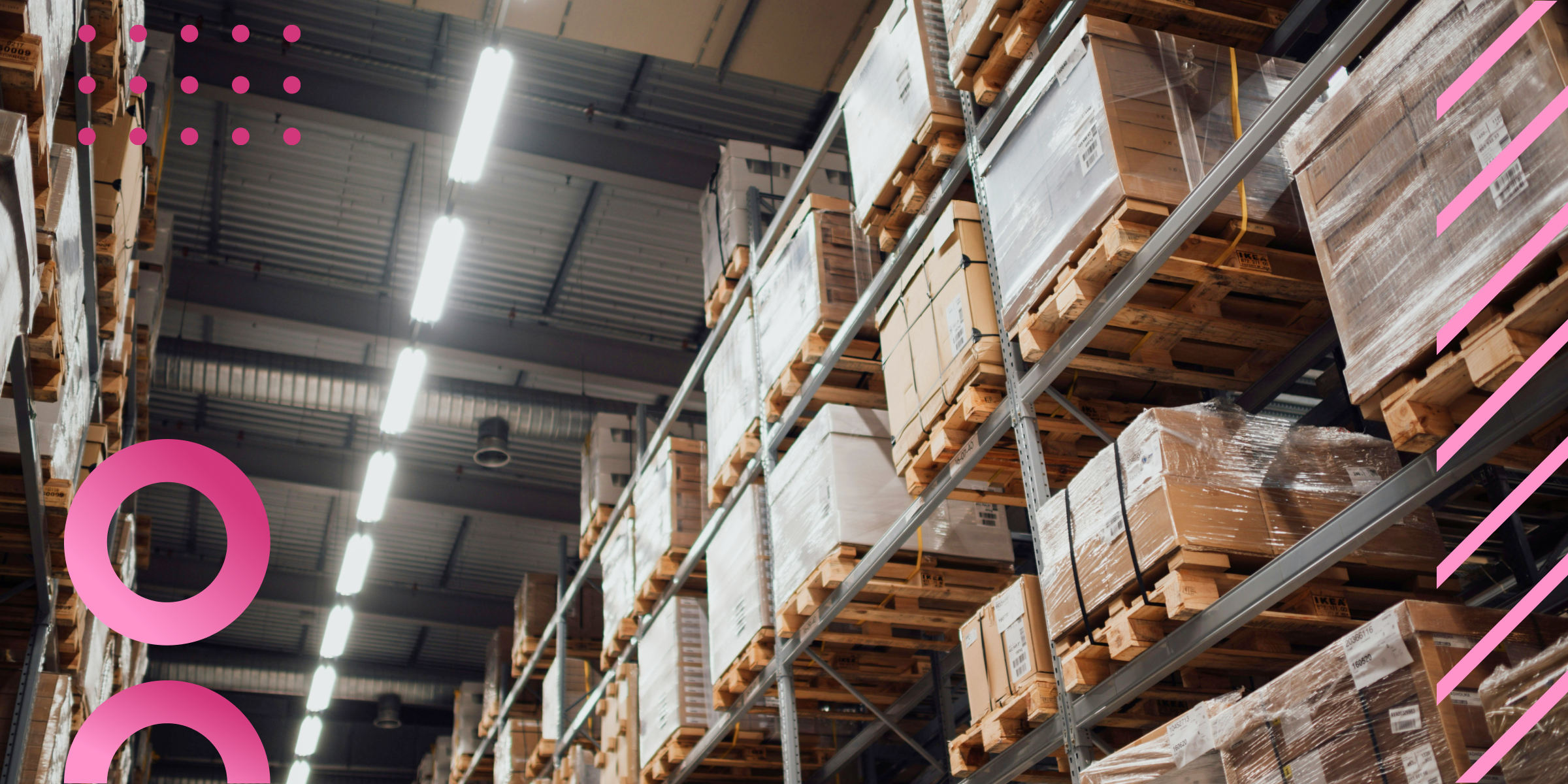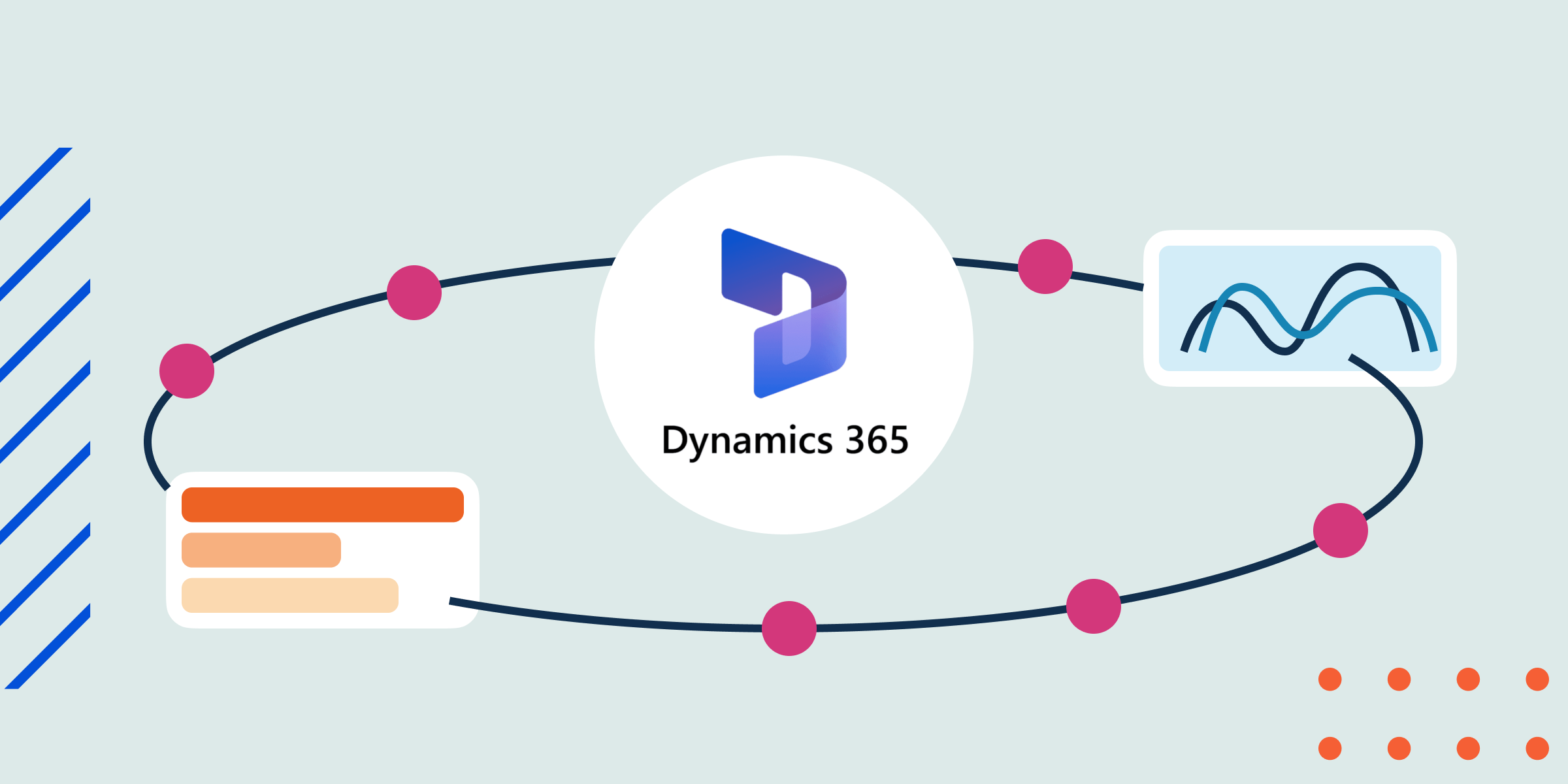B2B Ecommerce Isn’t Online Ordering—It’s Your Sales Lifeline (Here’s How to Actually Win in 2025)

73% of B2B buyers want a personalized, self-service experience that mirrors B2C.
If your ecommerce strategy doesn’t deliver, you’re leaving money on the table—and, no, simply having an online store doesn’t cut it anymore. You need a smarter, more customer-centric approach.
Here’s what digital commerce looks like in the B2B world and how you can rise to the top.
Why B2B Ecommerce Isn’t Optional Anymore
There’s a common misconception that “B2B ecommerce” translates to “online ordering system”, but this is far from the case. The term actually describes how you interact, transact, and build relationships with your customers.
If you continue relying on traditional channels like call centers and email orders, you’ll face higher costs, inefficiencies, and more errors. This means evolving from outdated ways of doing things to sharing real-time information online—just like a customer would get through direct contact with a sales rep.
Without transparently sharing key buying info, like stock availability, personalized pricing, and detailed order histories across all channels, customers will revert to old habits. This is why the digital commerce arm of B2B is so important, especially today when consumers in all industries expect fast, convenient purchasing experiences.
What Great B2B Ecommerce Actually Looks Like
Great B2B ecommerce is exactly the same as great B2C ecommerce—and it’s all based on adoption. But unlike B2C, where user engagement often revolves around convenience and impulse, B2B ecommerce success is tied to operational efficiency, consistent data, and meeting complex customer needs in a way that feels natural.
Here are a few elements of “great” B2B ecommerce.
1. Build for Buyers, Not Just Screens
The foundation of excellent B2B ecommerce is really just an in-depth understanding of what customers need. This means going beyond transactional capabilities to create a B2B ecommerce platform that’s the first point of interaction for customers.
Your site should let customers:
- View their full order history—not just web orders, but also those placed via sales reps, phone, or email.
- Check stock availability across multiple locations, track backorders, and get real-time, accurate data.
- Manage invoices, resolve disputes, and communicate with customer service directly through the platform.
The best B2B ecommerce sites make sure all this info is accessible first, which makes the last piece of the transaction the easiest piece of the puzzle.
2. If Your Data Isn’t Synced, Your Customers Won’t Be Either
One of the biggest barriers to B2B ecommerce adoption is inconsistent information. Trust erodes really quickly when there are discrepancies between what a customer sees online and what they hear from a sales rep.
If customers can only see their web orders and not orders they place with their sales reps, they aren’t going to continue to use those channels. And why would they, when they can’t trace them to see when they’re going to be delivered or to amend them if needed?
Not only should this info be consistent everywhere, but it also needs to be up-to-date and accurate. You can’t have one price on the website and another price if a customer calls you just because the system hasn’t synced properly.
3. Make Every Buyer Feel Like Your Only Buyer
B2B buyers expect tailored experiences just as much as B2C customers. Good B2B ecommerce takes customer data, like order frequency, quantity, and industry, and uses it to create unique experiences.
If you have customers from particular groups you can show them additional page content, change the website banner, or add pages to make their experience more relevant. This can also drive upsells and be useful if you’re launching a new product to a specific customer segment.
4. Complex Orders, Simple Experience
B2B transactions often involve bulk orders, recurring purchases, and multiple stakeholders that need to approve one purchase.
This means features like saved carts, quick reorders, and flexible payment terms can be useful for customers who need a little flex in their buying cycles.
It can also help to let different team members place orders, approve transactions, and access account details based on their roles to speed up transactions.
5. In B2B, One Mistake Can Cost Millions
The stakes in B2B ecommerce are often much higher than in B2C ecommerce because you’re handling huge orders that have a lot of money behind them (and, in some instances, are literally a case of life and death if we’re talking about vital medical supplies).
Delays, errors, or outdated information can have significant consequences, so it’s important that you offer real-time updates for inventory, pricing, and order status as well as a quick and easy way to make changes online.
Stop Treating B2B Buyers Like They’ll Tolerate Bad UX
There’s this outdated belief that B2B customers can put up with a terrible user interface and a bad user experience.
Companies are quite happy to make something cumbersome, forgetting their customers are the same people using Amazon and modern B2C ecommerce sites without a problem.
This kind of user experience is exactly what B2B customers expect now.
They want a website that’s easy to order through, even if they all prefer to order in different ways. Bear in mind there’s a lot more repeat ordering in B2B. There’s a lot more bulk ordering, there might be barcode scanning, and there might be spreadsheet uploads rather than simply navigating around the site.
Regardless of what B2B customers need, your website should still be easy to use—and not a separate channel. When you keep it isolated from your ERP and CRM tools, you don’t get the big-picture view of your customers and your business.
4 Steps to Turn Your Ecommerce Site Into a Sales Engine
A B2B ecommerce strategy goes beyond building a pretty online store. It involves creating a seamless buying experience that actually drives adoption. These four crucial steps will help you attract the right customers, simplify their journey, and turn your ecommerce platform into a powerful sales driver.
1. Know Your Buyer Like You Know Your Product
Start by taking a close look at your customers.
Who are they?
What’s their age range?
Which generation do they belong to?
Understanding these details helps you spot trends that can influence buying behavior.
For example, younger generations entering the workforce often prefer to type more and talk less. If your ecommerce strategy doesn’t align with these preferences, you risk falling behind competitors who are meeting these evolving expectations.
2. Map Their Buying Journey—Then Make It Effortless
Once you know who your customers are, think about how they like to buy from you.
What types of orders do they place?
Do they make frequent, small purchases or larger bulk orders?
Consider the size of your product catalog, too— is it easy for customers to find what they need, or do they rely heavily on your sales team to guide them?
If the latter, you’ll need to invest time in organizing your product data so it’s easy to filter and search. This includes adding details like product compatibility, alternatives, superseded products, and other technical information that might currently live in the heads of your sales team.
While this requires effort upfront, it’s a really useful activity because you’re no longer reliant on individual team members. It also means your customers can access the information they need independently, even when key staff aren’t available.
3. Make Self-Service the Path of Least ResistanceIf Customers Are Asking for It, Put It Online
Many customers today prefer the convenience of typing a question into live chat rather than picking up the phone to call a sales rep.
Your ecommerce strategy needs to cater to this shift while still respecting the strong relationships your sales team has built with long-standing customers—especially those who value personal connections.
Ecommerce should free up your sales reps to focus on what they do best: selling and building relationships, not manually processing orders.
And, to do this, you need to encourage customers to place orders online. Or, at the very least, make it easy for them to see stock availability, account balances, and order online.
For more traditional or older customer segments, you might need to take a more hands-on approach. Get your sales reps to play an active role in helping customers make their first online order, even if that means sitting down with them to walk through the process.
4. If Customers Are Asking for It, Put It Online
Your B2B ecommerce strategy should be shaped by real customer needs.
The best way to do this is to tap into your sales and customer service teams. They’re on the front lines, fielding questions and troubleshooting issues every day, so use their insights to improve the buying experience.
Are customers constantly asking for washing instructions? Make them easily accessible on product pages.
Do they need installation guides? Upload step-by-step videos.
Whether it’s technical specs, shelf life details, or compatibility charts, make sure all the key info customers need is available online. Even if a customer isn’t ready to buy, they should be able to visit your site and find everything they need to make a decision.
A strong strategy mirrors the way your customers research, evaluate, and purchase, so building your site around real customer behavior builds trust and, ultimately, drives adoption.

How B2B Brands Like Yours Nailed Ecommerce: 4 Real World Examples
Here are some real-life scenarios where B2B companies have built out successful ecommerce strategies.
1. Trust Pet
Leading UK wholesaler, Trust Pet Products, knew they needed to improve customer service and overall operations for their busy B2B clients.
Traditional ordering methods, like phone and email during office hours, were inconvenient and led to an influx of requests for invoices, order histories, and other important info. On top of this, manually adding orders to their ERP system was wasting a lot of time and complicating strict delivery schedules.
To address these challenges, Trust Pet integrated Experlogix Digital Commerce with their existing ERP system so customers could self-serve 24/7. They could:
- Browse a comprehensive, up-to-date product catalog with intuitive search and filtering options.
- View live stock levels and personalized pricing.
- Place orders directly into the ERP system, reducing manual processing and associated errors.
The platform also offered a mobile app, so customers could order on the go.
As a result, Trust Pet enjoyed a 30% increase in online turnover within two years, but it also improved customer satisfaction by offering a more convenient way to buy.
2. Time Products
Time Products Ltd, a renowned distributor of luxury watch brands, was struggling with its traditional, manual order processing system. It was time-consuming, riddled with errors, and couldn’t keep up with the demands of the company’s growing B2B customer base.
To tackle this, Time Products integrated Experlogix Digital Commerce with their SAP Business One system. This move let them show real-time pricing, stock levels, and account information to their customers, and online orders were pushed directly into their ERP system.
This digital solution meant Time Products could provide customers with up-to-date information and make the buying process significantly smoother.
3. Klipspringer
Foo safety and hygiene solutions company Klipspringer realized their traditional ordering methods were getting outdated. Customers expected the convenience of digital B2B ordering and they noticed a growing demand for direct-to-consumer (D2C) sales channels.
To meet these needs, Klipspringer implemented Experlogix Digital Commerce WebShop which integrated with their existing ERP system without a hitch. Through this integration, they could offer real-time product information, specifications, and compliance documents, all synchronized with their ERP for easy management.
Even better, customers could retrieve and accept quotes online—a quick way to convert them into real-time sales orders—and the platform’s flexible catalog management and search features meant users could find products using keywords, SKUs, or alternative names.
Since adopting the Experlogix Digital Commerce WebShop, Klipspringer has experienced remarkable growth. Over three years, they achieved a 350% increase in order value and a 300% rise in order volume.
4. United Hardware
Ireland’s leading buying and marketing group for builders’ merchants and DIY retailers, United Hardware, couldn’t get their existing ecommerce platform to fully integrate with their SAP ERP system. It meant members struggled to see and manage product info.
To overcome this, United Hardware partnered with Experlogix Digital Commerce to develop the “United Toolbox”, a flexible and secure digital ordering platform. This new system gave members a single login they could use to access a full suite of online services.
As a result, United Hardware saw a 20% increase in online orders. And, because members could self-serve, the team could focus on value-adding activities like relationship management and support services.
Choosing the Right Platform: What Actually Matters
We talked about technology in a previous section. But B2B ecommerce platforms are so important to the success of your online store, we wanted to spend more time on them.
What is a B2B Ecommerce Platform?
A B2B ecommerce platform is a piece of software that allows B2B companies to sell their products and/or services online. Customers can use the platform to peruse product catalogs, read reviews, compare options, input payment info, and otherwise complete the online buying process. As such, these B2B platforms are essential to ecommerce for B2B brands.
Why Are B2B Ecommerce Platforms Important?
B2B ecommerce platforms enable B2B companies to sell products and services online. Doing so helps them connect with more customers and drive more revenue. While many website builders and other apps allow companies to close deals online, B2B ecommerce solutions are specifically designed for B2B business. Because of this, they have the key features B2Bs need.
What Features Should Your B2B Ecommerce Platform Have?
Every business-to-business company is different. But most, if not all of them should invest in a B2B ecommerce platform with the following features:
- Different storefronts for B2B and DTC customers
- The ability to create personalized accounts for each customer
- A way to build personalize customer experiences at scale
- Plenty of space for detailed product descriptions and visuals
- The option to adjust pricing based on predetermined factors
- Multiple payment options to satisfy various customer preferences
What Makes a B2B Ecommerce Platform Great?
There are plenty of B2B ecommerce solutions out there. Why are some of them better than others? There are many potential reasons, but we’ve identified four common ones.
First, the ideal B2B ecommerce platform is easy to use. You shouldn’t want to pull your hair out every time you add products or adjust web pages on your site.
Second, the B2B platform you invest in should be customizable. That way you can adjust it to meet your exact needs. This will help you build a stellar online store now. It will also ensure your tool of choice scales with your B2B business as it secures new customers and grows.
Finally, top-level B2B ecommerce solutions are secure. Private customer information needs to remain private. Just as important, customers need to believe their personal details will be kept safe. If they don’t, you’ll never make as many ecommerce sales as you want.
Streamline Your Sales Process With B2B Ecommerce
B2B ecommerce is the future.
As time passes and younger generations assume managerial roles, the desire to purchase business products online will only increase. By jumping on the bandwagon now, you can help your company meet the growing market demand and outpace its competition. Win!
To succeed with B2B ecommerce, use the five-step strategy we outlined in this article. Then implement the best practices we covered to supercharge your efforts and drive more revenue.
Just remember, a B2B ecommerce platform is the foundation of your entire online sales strategy. Once you have the right tool, you can connect with your target audience, sell products and/or services, and increase revenue—all while delighting customers and earning their loyalty.
When it comes to digital commerce solutions, give Experlogix a try. Our solution was designed to streamline business processes, satisfy customers, and scale with your growing business.
Just as important, Experlogix integrates with many other tools you use every day.
Schedule a free strategy call with our team today to see if Experlogix is right for you!



